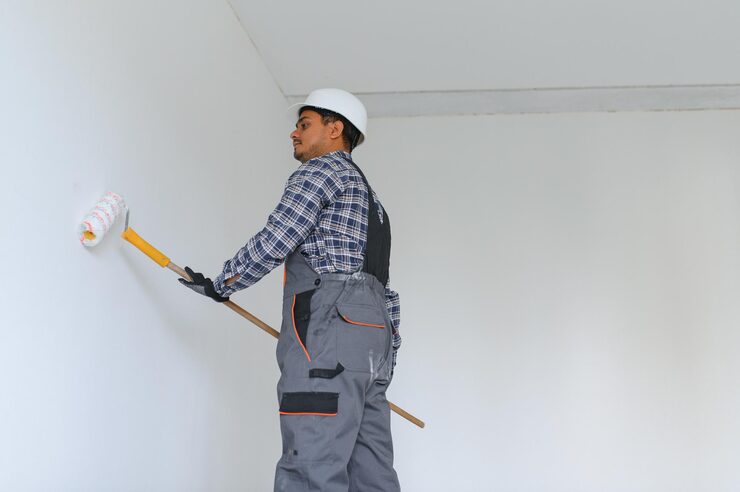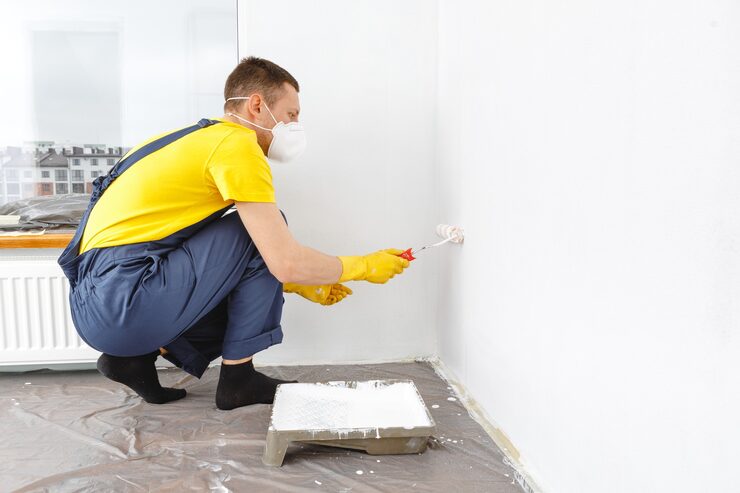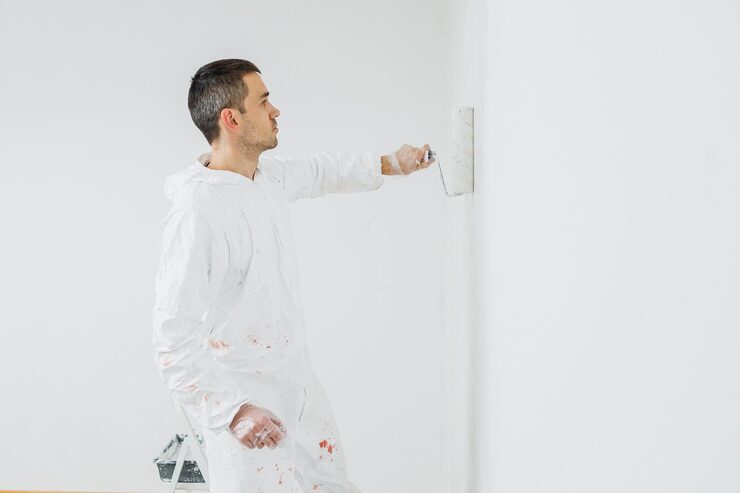Menu

✔ Primer seals new drywall, prevents uneven paint absorption, and creates a smooth surface for painting.
✔ One coat of primer is usually enough, but a second coat may be needed if coverage looks thin or patchy.
✔ Select a quality primer suited for drywall to ensure better adhesion and a more durable paint finish.
✔ Apply primer evenly with the right tools and allow it to dry completely for the best results.
✔ Inspect, sand, and clean the primed surface thoroughly to prepare for a smooth final coat of paint.
Priming new drywall is an important step to ensure the paint looks smooth and lasts for years. Skipping this step or rushing through it can lead to uneven coverage. This is why many people ask how many coats of primer on new drywall are needed for the best results, and the answer often depends on how well the walls are prepared.
Here are the right steps to follow before painting.
Primer creates a sealed layer that allows the paint to bond better. Without primer, the paint will not look even and may not last long. People often ask, how many coats of primer on new drywall are needed, but before deciding, it is important to understand why priming is so important.

Are two coats of primer necessary? First of all, applying primer on new drywall is one of the most important steps before painting. The answer depends on the surface condition and the final look desired.
For new drywall, use two coats of PVA primer because the surface tends to absorb paint quickly. Many people ask do I need two coats of primer, and in this case, applying two coats ensures better coverage and a smoother result.
Consider a second coat for the following situations:
Using the proper product helps the paint stick better and makes the finish smoother and more even. When wondering do I need 1 or 2 coats of primer on new drywall, it also depends on the type of primer used.
Many homeowners ask do I need two coats of primer, but often overlook that the type of primer influences the results, too. Different primers work for different situations.
When priming new drywall, taking the time to do it the right way will make the paint look smoother and last longer. These tips also explain when are two coats of primer necessary.
Use a soft brush or a vacuum with a brush attachment to remove all dust from the drywall. Lightly wipe the walls with a damp microfiber cloth to catch fine dust particles.
Having the right brush and roller also makes it easier to know how many coats of primer on new drywall are truly needed. Use an angled paintbrush for trimming around corners, ceilings, and edges where a roller cannot reach.
Work in small sections, rolling from top to bottom to avoid streaks. Check for thin patches and lightly go over them again while the primer is still wet.
Getting the walls ready ensures a smooth finish and helps the paint last longer. These tasks can make a big difference, especially for those wondering how many coats of primer on new drywall are needed.
After the primer has dried completely, the surface should be checked carefully for any flaws or missed spots. This step also helps determine when are two coats of primer necessary, as missed or thin areas can affect the final paint job.
A fine-grit sanding sponge or sandpaper (220 grit) works well to remove small raised fibers or bumps left after priming. A smooth surface makes it easier to determine how many coats of primer on new drywall might be required.
Shine a light on the wall to see if any parts of the drywall are still visible through the primer. If some areas look patchy or too thin, applying another coat will help the paint stick better and look more even.

Four coats of primer are generally too much for new drywall and are usually not necessary. One full coat is often enough, and a second coat may be applied if the first coat does not fully cover or the surface is very porous.
Primer can look patchy if it was not applied evenly or if the drywall absorbed it at different rates. This can happen when the roller or sprayer doesn’t spread the primer consistently or when the surface wasn’t sealed properly.
Both rolling and spraying work well, but rolling is usually better for homeowners because it helps push primer into the surface and is easier to control. Spraying can be faster, but it requires backrolling to ensure the primer fully adheres and doesn’t leave thin spots.
If the primer is sprayed and not backrolled, it can sit on the surface instead of bonding properly. This can cause uneven coverage and poor adhesion, which may lead to peeling or visible flaws after painting.
Using paint and primer in one is not recommended for new drywall because it won’t seal the surface as effectively as a separate primer. A dedicated primer is designed to block stains, seal the drywall, and create a uniform surface for paint.
At Westport Professional House Painters, we provide top-quality drywall priming and painting services designed for lasting results. We handle every step with care, from preparing new drywall to applying the correct number of primer coats for a flawless finish. We proudly serve Westport, CT, with professionalism and attention to detail on every project.
Call today to schedule a free estimate.